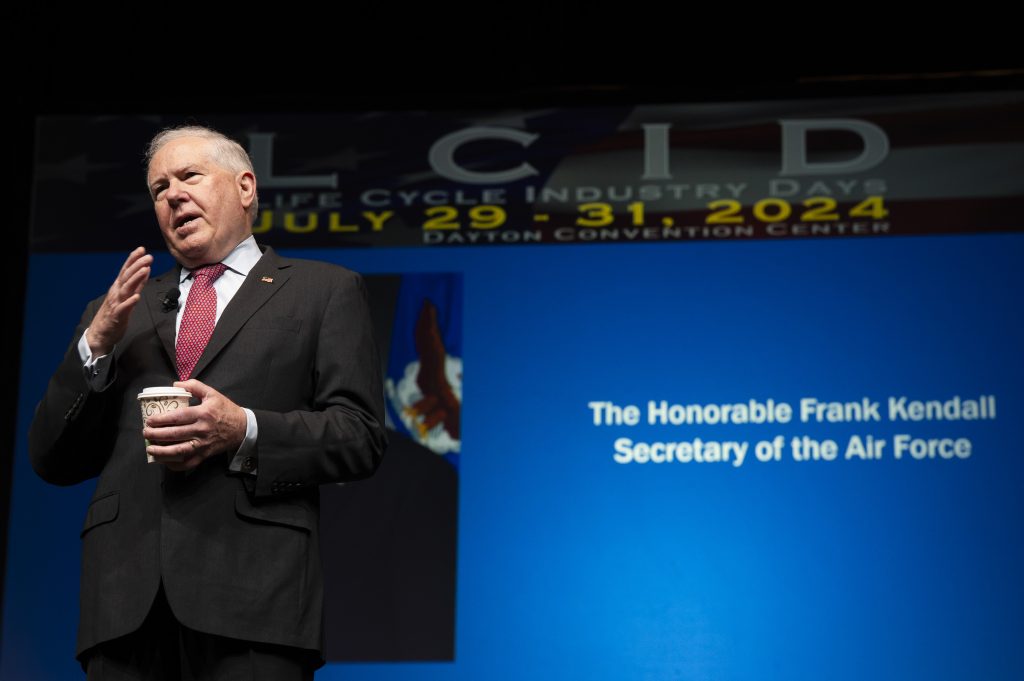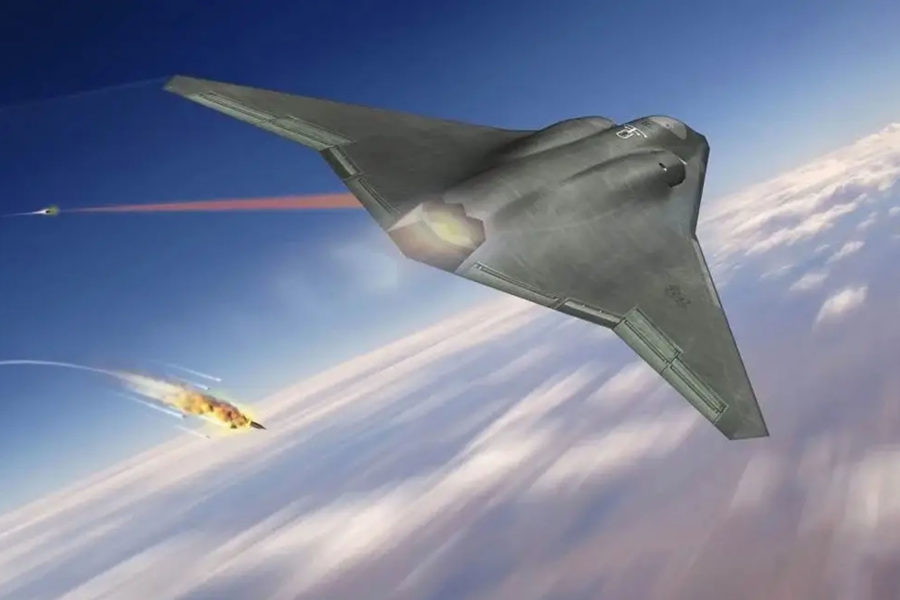The Air Force will put the Next Generation Air Dominance program on hold for a few months in order to see whether it is “on the right course” with the fighter that was intended to replace the F-22, Secretary Frank Kendall said July 30. However, all other aspects of air superiority modernization are moving ahead as fast as possible, he said.
Kendall, speaking at the annual Life Cycle Industry Days in Dayton, Ohio, assured listeners at his keynote speech that NGAD will go forward in some form, expressing confidence that “we’re still going to do a sixth-generation, crewed aircraft.”
The Air Force’s is asking itself some tough questions, however.
Does the service have “the right process? … The right operational concept?” Kendall said of the Air Force’s examination. “Before we commit to moving forward on a single design [and a] single supplier, we’re going to take a hard look at that.”
Kendall also held open the option that the NGAD could be uncrewed, though he said he doesn’t think the technology is quite “there yet” to move fully in that direction. The NGAD could be “optionally crewed,” he said, as the B-21 Raider stealth bomber was intended to be.
The NGAD is a “family of systems” which comprises a formation or aircraft. The center of the formation is the crewed fighter, controlling up to six Collaborative Combat Aircraft. The CCA is so closely linked to NGAD that they are funded in the same budget line.
Speaking at an AFA Warfighters in Action event in June, Chief of Staff of the Air Force Gen. David W. Allvin raised eyebrows when he said that NGAD is one of “many choices” on the budget landscape, a departure from the rock-solid support the fighter has had from the service until now. Since then, Kendall and other service leaders told reporters at the Paris Air Show that the jet is getting a “hard look” to see if it’s massive cost can be reduced. Kendall himself has said it will be “multiple hundreds of millions” of dollar per copy.
The NGAD may also have been outrun by the technology advances on the CCA, and must be reconciled with its low-cost stablemate, which by all accounts is making great strides. Kendall referred to the CCA program as taking an “incremental approach” to fielding capability.
Kendall said last year that a contract award for NGAD would be coming in 2024, but his comments in Ohio indicate that may no longer be the case.

Only Lockheed Martin and Boeing seem capable of offering a fully-formed candidate. Northrop Grumman has publicly stated it will not compete for the NGAD contract. However, Kendall has pushed for smaller contractors to be involved in new aircraft design and technology and, especially with CCAs, seems willing to divide work among many hands rather than rely solely on well-established primes.
Although Kendall has said that the goal is to frequently upgrade the NGAD with new systems, weapons and technologies, senior Air Force leaders have privately questioned whether that approach will work, given the accelerating rate of technology change. The NGAD may have to be updated on a pace comparable to that of the CCA, with its technology and even design turning over every three years or so.
Kendall noted that USAF must accommodate to China’s rapid advances in air combat technology and its ability to rain ballistic missiles down on air bases. If the Air Force is compelled to operate only from bases with long runways, that’s “a problem for us,” Kendall said.
